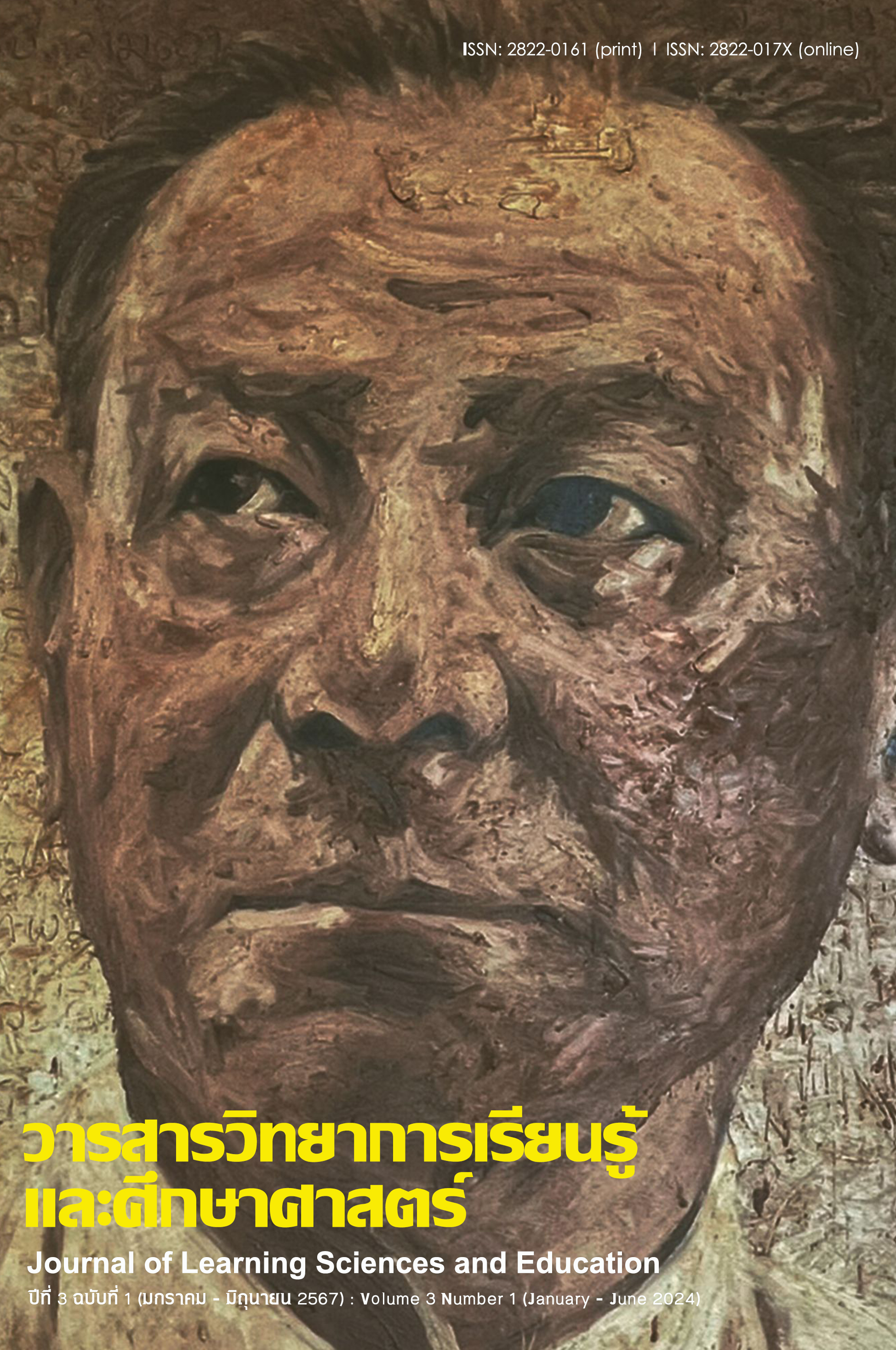Fostering Critical Thinking Skills in Lower Secondary School Students by Using Group Discussion Articles and Clues Box
Main Article Content
บทคัดย่อ
This study aimed to assess and compare the development of students' critical thinking skills using group discussion articles and Clues Box as instructional tool in a lower secondary classroom at The Prince Royal’s College, Chiang Mai Province, Thailand. Twenty purposively sampled students participated, evaluated through a critical thinking skills test and group discussion assessments. The findings revealed a significant improvement in students' critical thinking abilities post-intervention. The pre-test average score was 60.2, increasing to 72.8 in the post-test, indicating a highly significant improvement. The paired t-test showed a substantial t-value of 19.69 (df = 19, p < 0.001), affirming the statistical significance of the results. Integrating group discussion articles and Clues Box effectively enhanced students' capacity to critically analyze information, consider diverse perspectives, and engage actively in discussions. These findings underscore the value of innovative pedagogical strategies in fostering critical thinking skills among secondary students, essential for success in today's dynamic global environment.
Article Details

อนุญาตภายใต้เงื่อนไข Creative Commons Attribution-NonCommercial-NoDerivatives 4.0 International License.
เอกสารอ้างอิง
Abrami, P. C., Bernard, R. M., Borokhovski, E., Waddington, D. I., Wade, C. A., & Persson, T. (2015). Strategies for teaching students to think critically: A meta-analysis. Review of Educational Research, 85(2), 275-314.
Asrita, A., & Nurhilza, N. (2018). Students’ critical thinking skills in group discussion: The case study of fifth grade students in Sukma Bangsa Bireuen Elementary School. Sukma: Jurnal Pendidikan, 2(1), 67-92.
Baines, E., Blatchford, P., & Chowne, A. (2007). Improving the effectiveness of collaborative group work in primary schools: Effects on science attainment. British Educational Research Journal, 33(5), 663-680.
Baines, E., Blatchford, P., & Kutnick, P. (2019). Promoting effective group work in the primary classroom: A handbook for teachers and practitioners. Routledge.
Dwyer, C. P., Hogan, M. J., & Stewart, I. (2014). An integrated critical thinking framework for the 21st century. Thinking Skills and Creativity, 12, 43-52.
Ennis, R. H. (2015). Critical thinking: Reflection and perspective Part I. Inquiry: Critical Thinking Across the Disciplines, 34(2), 47-60.
Facione, P. A. (2015). Critical thinking: What it is and why it counts. Insight Assessment.
Foundation for Critical Thinking. (2020). Defining critical thinking. Retrieved from https://www.criticalthinking.org/pages/defining-critical-thinking/766
Fung, D. C. L., To, H., & Leung, K. (2016). The influence of collaborative group work on students’ development of critical thinking: The teacher’s role in facilitating group discussions. Pedagogies: An International Journal, 11(2), 146-166.
Halpern, D. F. (2014). Thought and knowledge: An introduction to critical thinking. Psychology Press.
Johanna, A., Avinash, B., & Bevoor, B. (2023). Small group discussion method to increase learning activity: Its implementation in education. International Journal of Educational Narratives, 1(1), 18-22.
Jones, J. M. (2014). Discussion group effectiveness is related to critical thinking through interest and engagement. Psychology Learning & Teaching, 13(1), 12-24.
Ministry of Education Thailand. (2021). National Education Act B.E. 2560 (2017). Retrieved from https://www.moe.go.th/en/national-education-act-b-e-2560-2017/
Murawski, L. M. (2014). Critical thinking in the classroom… and beyond. Journal of Learning in Higher Education, 10(1), 25-30.
Nelson, C. (2006). Fostering critical thinking: Comments and conversations. The Center for Excellence in Learning and Teaching (CELT). Brockport, NY; The College at Brockport. State University of New York.
Nunan, D. (2004). Task-based language teaching. Cambridge University Press.
OECD. (2019). The future of education and skills: Education 2030. OECD Publishing.
Paul, R., & Elder, L. (2020). Critical thinking: Concepts and tools. Foundation for Critical Thinking.
Piaget, J. (2014). Piaget's theory of cognitive development. In J. Piaget & B. Inhelder (Eds.), The psychology of the child (2nd ed.). Basic Books.
Snider, D. (2017). Critical thinking in the foreign language and culture curriculum. The Journal of General Education, 66(1-2), 1-16.
Suwathanpornkul, I. (2019). Educational Research: Concepts and Applications [การวิจัยทางการศึกษา: แนวคิดและการประยุกต์ใช้]. Chulalongkorn University Press.
Sutthirat, C. (2018). English language education in Thailand: Policy and practice. Springer.
Tomlinson, B. (2012). Materials development for language learning and teaching. Language Teaching, 45(2), 143–179.
Trang, N. H., & Anh, K. H. (2020). Impact of teaching critical thinking tasks for enhancing paragraph writing performance of EFL learners. International Journal of Education and Practice, 8(4), 784-803.
Trilling, B., & Fadel, C. (2009). 21st century skills: Learning for life in our times. John Wiley & Sons.
Zhang, J., Scardamalia, M., Lamon, M., Messina, R., & Reeve, R. (2018). Socio-cognitive dynamics of knowledge building in the work of 9- and 10-year-olds. Learning, Culture, and Social Interaction, 18, 6-21.


